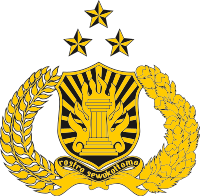
Photo from wikipedia
© The Author(s) 2021. Open Access This article is licensed under a Creative Commons Attribution 4.0 International License, which permits use, sharing, adaptation, distribution and reproduction in any medium or… Click to show full abstract
© The Author(s) 2021. Open Access This article is licensed under a Creative Commons Attribution 4.0 International License, which permits use, sharing, adaptation, distribution and reproduction in any medium or format, as long as you give appropriate credit to the original author(s) and the source, provide a link to the Creative Commons licence, and indicate if changes were made. The images or other third party material in this article are included in the article’s Creative Commons licence, unless indicated otherwise in a credit line to the material. If material is not included in the article’s Creative Commons licence and your intended use is not permitted by statutory regulation or exceeds the permitted use, you will need to obtain permission directly from the copyright holder. To view a copy of this licence, visit http:// creat iveco mmons. org/ licen ses/ by/4. 0/. The Creative Commons Public Domain Dedication waiver (http:// creat iveco mmons. org/ publi cdoma in/ zero/1. 0/) applies to the data made available in this article, unless otherwise stated in a credit line to the data. Background In 2019, the Paris Fire Brigade described the chemical, biological, radiological, and nuclear chain of survival (CBRN-CS) to point out five essential tasks that first responders should perform in managing individuals in a CBRN situation [1]. These tasks are inseparable, and they should be performed in the following order (Fig. 1): 1. Spot decontamination to reduce toxicity and prevent the spread of contamination; 2. Early toxidrome recognition to warn and prepare the healthcare chain; 3. Early antidote administration to prevent death; 4. Thorough decontamination to protect the healthcare system; and 5. Evacuation and transport to the hospital to continue the medical management of casualties. The purpose of developing the CBRN-CS was to provide a pragmatic, didactic tool that could be used during a CBRN crisis by all first responders, of any profession, and that would be applicable to all CBRN situations. In CBRN events, we face multiple challenges. Despite the indisputable, constant threat of real CBRN situations, fortunately, they are rare. Thus, most first responders have never been exposed to real CBRN situations. Moreover, first responders often have insufficient levels of training and knowledge, and few have the opportunity to attend CBRN training refresher courses or simulation courses [2]. We predict that a CBRN crisis will cause mass disruption, especially for the healthcare system, more than mass destruction (except in the case of a nuclear device detonation). In these unusual situations, first responders will experience extreme stress, and they must face the dilemma of triage. The use of personal protective equipment can increase stress [3], and it alters communication between team members [4]. It is well known that stress affects cognitive performance [5, 6]. Simulation studies conducted to test how clinicians deal with stressful scenarios have shown that performance can be affected by stress [7, 8]. In stressful situations, decision-making is most effective when those in charge have simple tools to help them remember the main tasks that must be performed.
Journal Title: Critical Care
Year Published: 2021
Link to full text (if available)
Share on Social Media: Sign Up to like & get
recommendations!